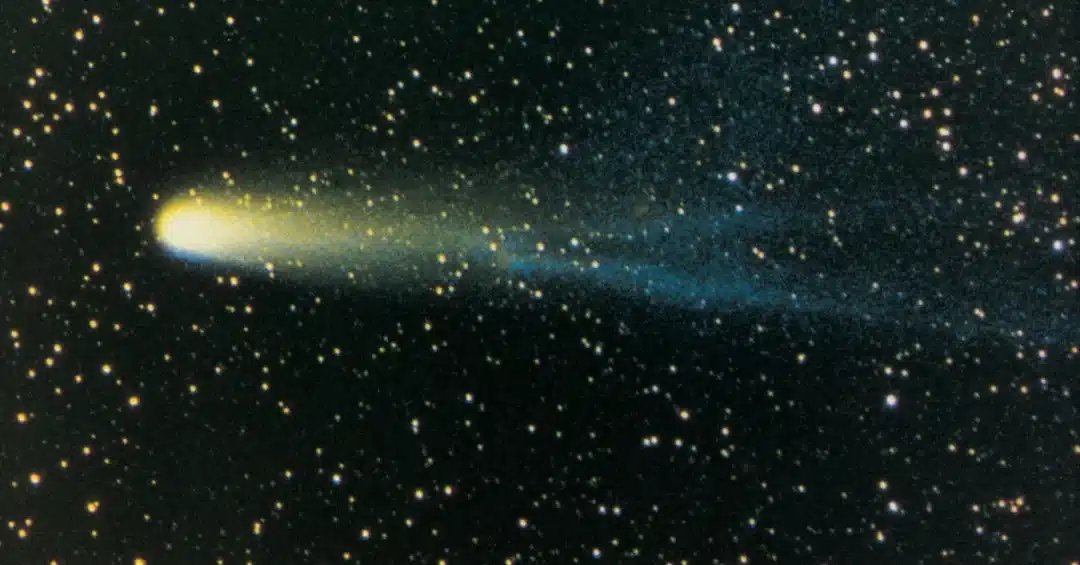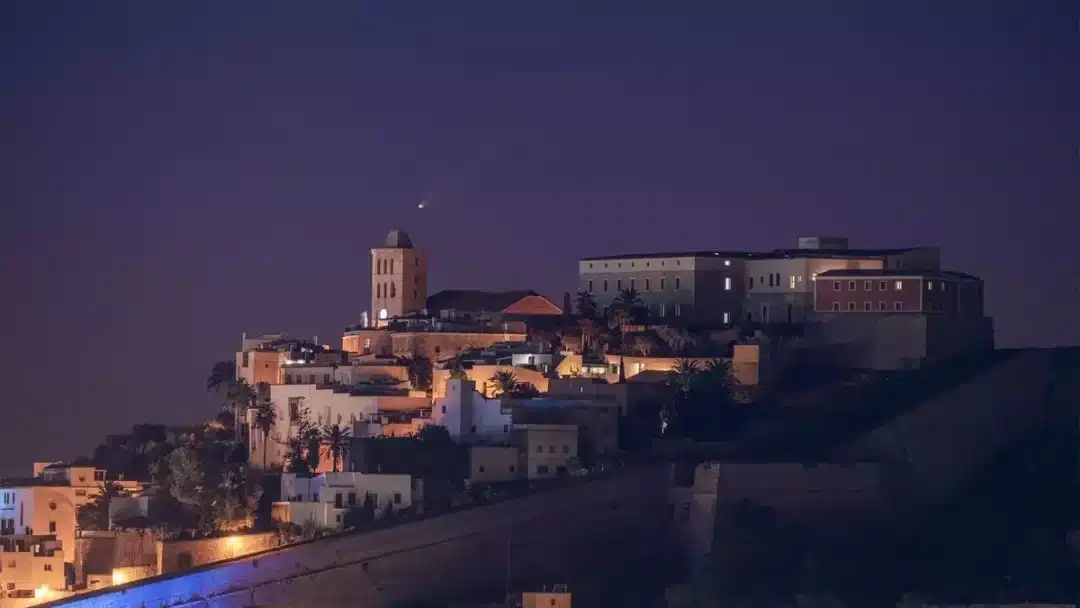A stunning sight of a comet over Ibiza has been captured by local photographer José Antonio Hervás, marking a rare celestial event. The comet, known as C/2023 A3 or Tsuchinshan–ATLAS, is making its way across the sky, visible to stargazers around the world.
After days of attempting to photograph the elusive comet, Hervás finally succeeded, with the iconic Ibiza Cathedral featuring prominently in his shot. “I had been waiting for this moment for weeks. After careful planning, I was able to capture the comet with the perfect backdrop,” Hervás shared.

A comet worth waking up early for
The shooting star has been causing a buzz in the astronomy community due to its brightness and stunning tail as it nears the Sun. Hervás had been tracking its movements, waking up early to get the right conditions for the shot. “For several mornings, I set up near the Can Misses football field, but clouds on the horizon kept obscuring the view,” he said.
However, persistence paid off on his third attempt, when the skies cleared, and Hervás knew this was his moment. “The sky was completely free of clouds, and I saw the comet appear just as I had hoped“, he explained. Using timelapse mode, he made sure to capture every moment of the luminous tail star’s passage. “It was an exhilarating moment. This is something you only get to see for a few days and then it’s gone.”

Why is it special?
The significance of the cosmic traveller C/2023 A3 or Tsuchinshan–ATLAS lies in its brightness, making it visible even to the naked eye under certain conditions. Its trajectory will bring it closer to the Sun than Mercury’s orbit, giving it an impressive tail and glow. Astronomers are particularly excited because this is one of the brightest comets to appear in northern latitudes since the Hale-Bopp comet lit up the skies in 1997.
Currently, it has a magnitude of 2.6 and is becoming brighter each day. According to the Star Walk 2 guide, comets become visible to the naked eye when they reach a magnitude of about 4 in a dark sky. If this one survives its closest approach to the Sun, known as perihelion, on 12 October, it will shine at its brightest as it approaches Earth.
Comet’s name explained
The name, C/2023 A3, carries significance. The ‘C’ indicates that it is a non-periodic comet, originating in the Oort Cloud. These types of comets either pass through the Solar System once or take between 200 to thousands of years to return. ‘2023 A3’ refers to its discovery in January 2023, being the third such object found during that time.
Finally, the name Tsuchinshan–ATLAS acknowledges the instruments used for its discovery, which involved telescopes from the Purple Mountain Observatory in China and the Asteroid Terrestrial-impact Last Alert System (ATLAS).
For Hervás, capturing such a rare event was a dream come true. His passion for astronomy and photography, honed through previous NASA features, continues to drive him to capture the night sky’s wonders. “Seeing the comet after all this time was unforgettable. It’s moments like these that remind me why I love what I do,” he concluded.








